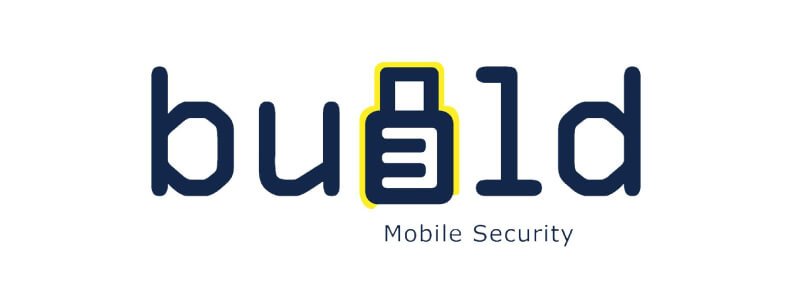Category: Business
SurgeGraph Introduces Longform AI, Revolutionizing Content Creation Process With 10x Faster, Easier, and Better Content
SurgeGraph, a Malaysian software company, announced its new product launch – Longform AI. This product is designed to help content creators create original long-form content faster and easier while also helping them rank higher in search engines.
Longform AI is a long-form content generator based on Google’s search algorithm. It provides users with the necessary tools to create longer and more in-depth content quickly and easily. For starters, the writing assistant helps to reduce the time spent searching for relevant information by suggesting topics related to the user’s query. This can significantly speed up content creation by providing users with a wealth of ideas and resources in one place.
The Longform AI Writing Assistant also considers the importance of context when creating long-form content. It searches and analyses the information from the top pages, which is used as the basis for content generation. It also has an integrated plagiarism checker that helps ensure that any referenced material is unique and correctly attributed to its source.
Furthermore, SurgeGraph’s Longform AI includes a popular questions explorer, which helps users develop compelling content to answer readers’ burning questions. It also gives users an insight into what type of content their target audience may be interested in reading.
Finally, SurgeGraph’s Longform AI Writing Assistant has been designed to help improve on-page optimization efforts by suggesting keywords relevant to the topic but not commonly used in other online articles or blogs. This ensures the content stands out and ranks higher in search engine results pages (SERPs).
“We are thrilled to launch our new Longform AI this coming March,” said a spokesperson of SurgeGraph. “This product update was created with our customer’s needs in mind so they can save time while creating in-depth long-form content that ranks higher on SERPs.”
About SurgeGraph
Founded in 2015, SurgeGraph quickly became the go-to keyword research tool for SEO professionals looking to improve their search rankings and gain more traffic. Today, SurgeGraph is a comprehensive SEO tool that goes beyond LSI keywords, emphasizing improving on-page SEO through keyword research, content creation and optimization, and internal link planning.
Contact Info:
Name: Sara Salim
Email: sara@surgegraph.io
Organization: SurgeGraph
Website: https://surgegraph.io
Like what you read? Read more technology and business news.
Perdoceo, an education services firm, has successfully acquired the coding bootcamp institution Coding Dojo for a sum of $52.8 million.
Coding Dojo, the software engineering bootcamp operator headquartered in Bellevue, Washington, has been acquired by Perdoceo, a publicly traded company based in Illinois that owns online academic institutions, including Colorado Technical University and the American InterContinental University System.
The acquisition was finalized on December 1 and was disclosed in Perdoceo’s annual earnings report released last Thursday. The agreement entails an initial cash payment of $52.8 million, with the potential for an additional $15 million in payments contingent upon meeting specific financial performance targets.
Established in 2013, Coding Dojo specializes in training software engineers in various fields, such as computer programming, data science, and cybersecurity. Notably, it is ranked 40th on the GeekWire 200, an index of prominent Pacific Northwest startups.
In recognition of its commitment to supporting underserved communities and refugees, Coding Dojo was awarded the Geeks Give Back award at the annual GeekWire Awards last year. Since its inception, the bootcamp has provided $13 million in scholarships and tuition assistance.
In response to the COVID-19 pandemic, Coding Dojo transitioned to an exclusively online business model but has subsequently reopened some of its physical locations. The company now operates under the umbrella of Colorado Technical University and no longer maintains physical offices.
Importantly, Coding Dojo will continue its day-to-day operations, retaining its existing brand and workforce of 194 employees. The company had previously licensed its courses to institutions worldwide and secured $10 million in venture debt in June.
Despite a rising demand for technical talent, access to university-level computer science education remains highly competitive. According to Course Report, there are over 500 code schools worldwide.
Richard Wang, the CEO and co-founder of Coding Dojo, previously held executive positions at Trupanion, a pet insurance company, and served as a chief of staff at Boeing. He also serves as a venture partner at NextGen Venture Partners.
Perdoceo boasts approximately 4,000 employees and reported revenues of $695.2 million in the previous year, marking a 0.3% increase from 2021.
Emphasizing the significance of left-shifting in app security, Build38 secures €13 million for its trust development kit.
Enterprise security’s weakest link is often identified as applications. The advent of cloud computing and the rise of hybrid work setups have cultivated an environment where applications stand as prime targets for cyber attackers. According to research, a significant 42% of organizations have encountered security incidents tied to unpatched mobile applications or devices.
Nevertheless, an increasing number of providers are stepping forward to bolster the defenses of applications against modern threat actors. One such player in this arena is Build38, a mobile security and application monitoring provider. Today, they have announced a successful €13 million funding raise as part of a Series A funding round, with Tikehau Capital leading the investment.
One of Build38’s key offerings, the Trusted Application Kit (TAK), is a software development kit crafted to seamlessly integrate with Android and iOS applications during their development phase. Its primary purpose is to incorporate threat detection capabilities directly into the application.
This funding announcement underscores the importance of shifting security practices to the early stages of development and integrating in-app protections. This strategic approach holds the potential to significantly diminish the likelihood of threat actors exploiting vulnerabilities in end-user devices, particularly at the network’s edge.
Security by design is the way forward
Build38’s announcement arrives at a time when cloud adoption is on the rise, and organizations are increasingly grappling with the reality of security threats. These threats not only target endpoints at the network’s perimeter but also extend to users’ personal mobile devices, especially in remote working setups.
“In this era of cloud computing, organizations are now acutely aware of and susceptible to attacks and threats that can originate from virtually anywhere,” remarked Christian Schläger, the CEO of Build38. “Whether you are a car manufacturer in China, a traditional commercial bank in Ghana, or a fintech company in the UK, all enterprises face similar threats from adversaries who exploit the fact that the concept of a ‘perimeter’ for infiltrating an organization’s network no longer stops where the service provider decides.”
He further explained, “Attackers can now easily reach individual users right in the palm of their hands, simply by downloading an app from an app store.”
Build38’s in-app protection employs artificial intelligence to detect any alterations, reverse engineering, or code manipulation within the app. This capability serves as a valuable complement to the security measures already offered by platforms like Google Play and the App Store.
Additionally, TAK possesses the capability to generate events and transmit data to an external Security Information and Event Management (SIEM) system when an app exhibits suspicious behavior. This empowers security teams to promptly identify potential breach attempts.
The mobile security market
Build38 operates within the mobile security market, a sector that was valued at $3.3 billion in 2020 and is anticipated to soar to $22.1 billion by 2030, reflecting a robust compound annual growth rate (CAGR) of 21.1%.
In this competitive landscape, one of Build38’s prominent rivals is Zimperium, a mobile endpoint and application security provider that was acquired by Liberty Strategic Capital for $525 million last year. Zimperium’s tool offers real-time threat visibility, security measures, and compliance scanning capabilities. It excels in detecting hacker intrusion attempts on applications and seamlessly integrates with external UEM and XDR platforms.
Another notable contender is AppDome, which specializes in safeguarding Android and iOS applications through runtime protection, anti-debugging features, and anti-tampering mechanisms.
What sets Build38 apart from its competitors, as Schläger emphasizes, is its unique approach. Build38 combines a client-based solution that empowers apps to be self-defending with a backend component that enables real-time threat monitoring and mitigation. This comprehensive solution also provides detailed threat reporting for organizations, equipping their teams to proactively combat security threats.
Saviynt secures $205M, reaffirms importance of cloud-friendly IAM
Traditional on-premises identity management falls short of meeting today’s demands. Modern organizations require automated, cloud-compatible Identity Access Management (IAM) systems to effectively authenticate and authorize a large number of remote users. In decentralized work settings, agility is crucial.
One company that’s striving to establish a nimble cloud IAM system is Saviynt, a provider of identity and access governance solutions. Saviynt recently announced a successful fundraising round, securing $205 million from AB Private Credit Investors’ Tech Capital solutions group.
Saviynt’s Enterprise Identity Cloud (EIC) is a cloud-native, unified identity platform specifically crafted to streamline identity and access management across various domains, including workforce, enterprise applications, privileged accounts, and third-party identities, all within a single comprehensive solution.
This innovative approach empowers security teams to efficiently oversee the entire identity lifecycle, utilizing automated workflows to govern identities at scale across on-premises, hybrid, and multicloud environments.
Protecting identities in the cloud
Funding is being provided in response to the persistent struggle organizations face in safeguarding identities from malicious actors. Research indicates that within the past year, 80% of organizations have experienced breaches related to identity security.
One of the primary obstacles contributing to this security gap is the absence of necessary technologies and processes within organizations, hindering the consistent enforcement of access management controls across both on-premises and cloud environments.
Sachin Nayyar, CEO and founder of Saviynt, emphasized the critical role applications play in modern organizations and their pivotal role in digital transformation. Managing identity in the cloud presents a central challenge, involving the need for secure and dependable access control to resources, all while preserving user privacy and ensuring compliance with regulatory requirements. This challenge is amplified by the substantial growth in the number of identities, spanning employees, third parties, and machine identities. Additionally, it entails guarding against unauthorized access and preventing over-provisioned access. Furthermore, the integration and synchronization of identities across diverse cloud environments and on-premises systems can pose a significant challenge.
Reviewing the IAM market
Saviynt operates within the Identity and Access Management (IAM) market, a sector that was valued at $12.3 billion in 2020 and is projected to reach $34.5 billion by 2028 as organizations grapple with increasing security and compliance challenges.
Among its notable competitors is SailPoint Technologies, a cloud-based IAM provider offering the SailPoint Identity Security Platform, incorporating artificial intelligence (AI) and machine learning for real-time access discovery and automation. In the previous year, Thoma Bravo acquired SailPoint Technologies for $6.9 billion.
Another significant contender in this field is Okta, which provides the Workforce Identity Cloud solution. It features single sign-on, adaptive multifactor authentication, and lifecycle management capabilities. Okta anticipates generating total revenue of $1.8 billion in 2023.
Nayyar contends that Saviynt’s distinctive advantage over its rivals lies in its cloud-native approach to identity security. He stated, “Unlike traditional identity security providers like SailPoint, Saviynt offers a cloud-native, unified identity platform encompassing workforce, enterprise applications, privileged, and third-party identities. This approach delivers the optimal user experience for addressing a wide range of use cases with the highest return on investment and lowest total cost of ownership (TCO).”
DeepL Secures $100 Million to Focus on AI Translation Solutions for Enterprise Clients
Cologne, Germany-based DeepL has announced a substantial funding raise, estimated to be well over $100 million, as it sets its sights on targeting enterprise customers with AI-powered language translation solutions. Language translation has become increasingly vital for businesses operating globally and across diverse demographics.
While basic language translation services like Google Translate have existed for decades, the challenge lies in providing more advanced translation capabilities tailored to business needs. These advanced solutions must not only convey the literal meaning but also capture the appropriate tone and context—a space where AI-powered language translation is beginning to demonstrate its significance.
DeepL, established in 2017, has steadily improved its technology by harnessing deep neural networks. The recent funding round has propelled the company’s valuation to over $1 billion, although the exact amount raised has not been publicly disclosed.
DeepL’s CEO, Jaroslaw “Jarek” Kutylowski, refrained from revealing the precise funding figure but emphasized the clear objectives for utilizing the funds. As the company continues to expand, Kutylowski stated that the funds will be allocated towards advancing fundamental AI research, exploring new product offerings, and broadening its portfolio to cater to enterprise clients.
AI-powered translation is a growing trend
The early stages of language translation primarily relied on basic pattern matching methods.
For instance, when a user inputted “hello” into a database, it sought an equivalent match in another language, such as French (“bonjour”). However, the fundamental semantic principles of pattern matching proved inadequate for more extensive translation tasks where context and tone played significant roles.
In the realm of advanced AI-driven language translation, numerous providers have been making significant strides. Google, for instance, has been enhancing its Google Translate service with various approaches, including the implementation of a recurrent neural network (RNN).
Microsoft has been actively upgrading its Azure Translator service, incorporating AI models that they claim enhance overall translation quality. Meanwhile, Meta (formerly known as Facebook) is not lagging behind and made an announcement in October 2022 about its ambitious project, the AI-powered Universal Speech Translator (UST).
Taking a deep neural network approach to language translation
DeepL has pioneered a language translation engine hinging on the utilization of neural networks (NN) to deduce precise translations.
As per the company’s claims, they employ an innovative NN architecture to grasp the subtle nuances of phrases and sentences, enabling them to effectively convey these nuances in a target language.
While the intricate workings of their translation technology remain undisclosed, Kutylowski, a representative of the company, asserted that DeepL consistently pushes the boundaries in the design of neural networks to optimize translation quality.
The original core mission of DeepL was to dismantle language barriers, and Kutylowski stressed that this mission remains at the forefront of the company’s endeavors.
“In the early stages, we perceived this mission as closely intertwined with translation, specifically,” he stated. “As we evolve as a company, we envision harnessing the underlying technology to facilitate human communication in various other ways, introducing new products aimed at enhancing communication.”
The continuing enterprise challenges of translation
DeepL is committed to addressing the myriad challenges that enterprises encounter in the realm of translation. According to Kutylowski, as the world becomes increasingly interconnected each year, the significance of language translation and communication continues to rise. He believes that existing approaches to localization may be insufficiently swift and scalable to meet the growing demand.
Kutylowski further states, “Tools like DeepL empower end users across various teams, be it marketing, legal, or any other, to seamlessly communicate and disseminate content internationally, eliminating the need for external specialized teams or hiring. This, in turn, opens up entirely new possibilities.”





